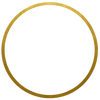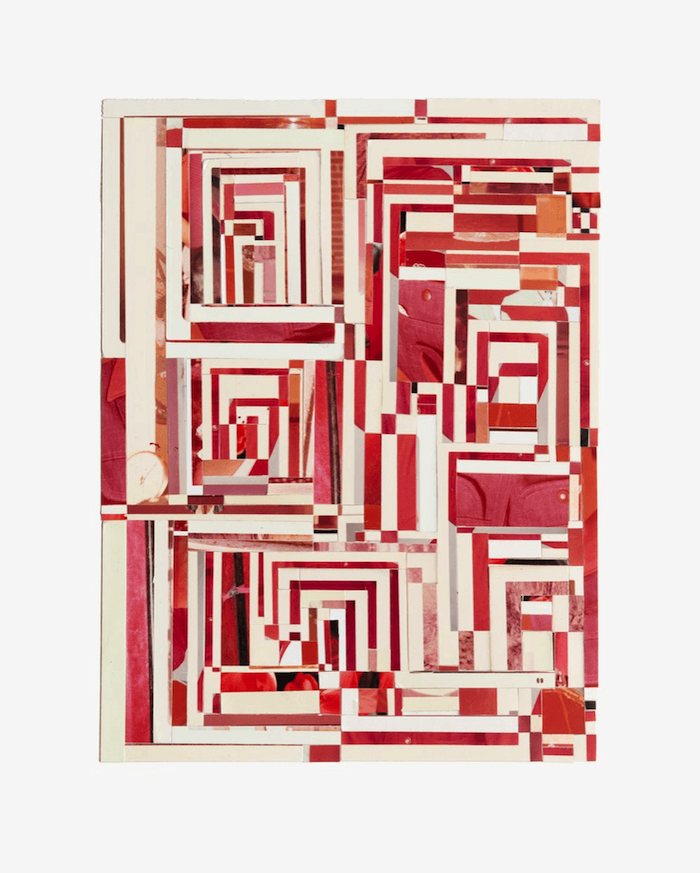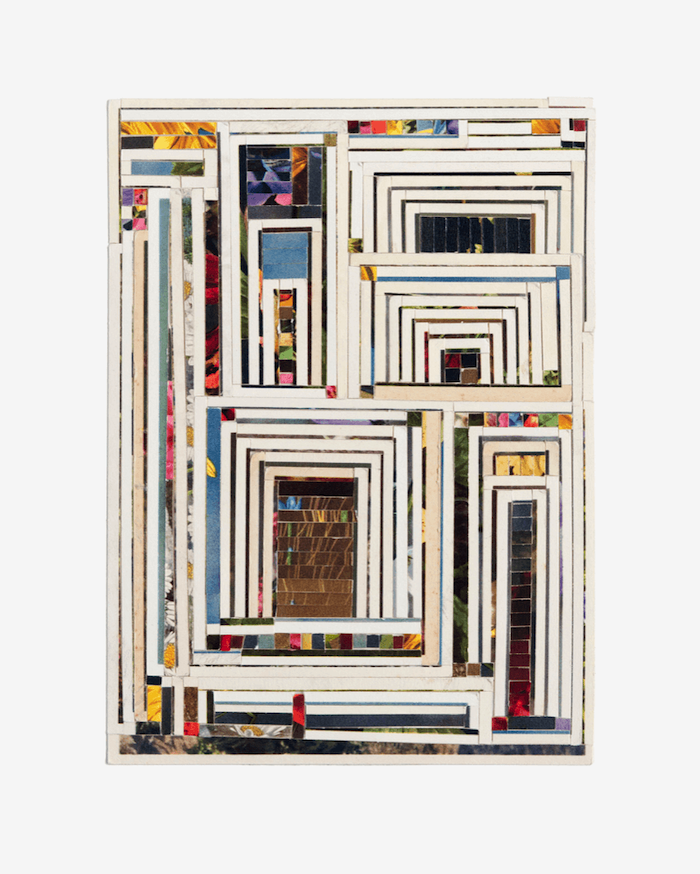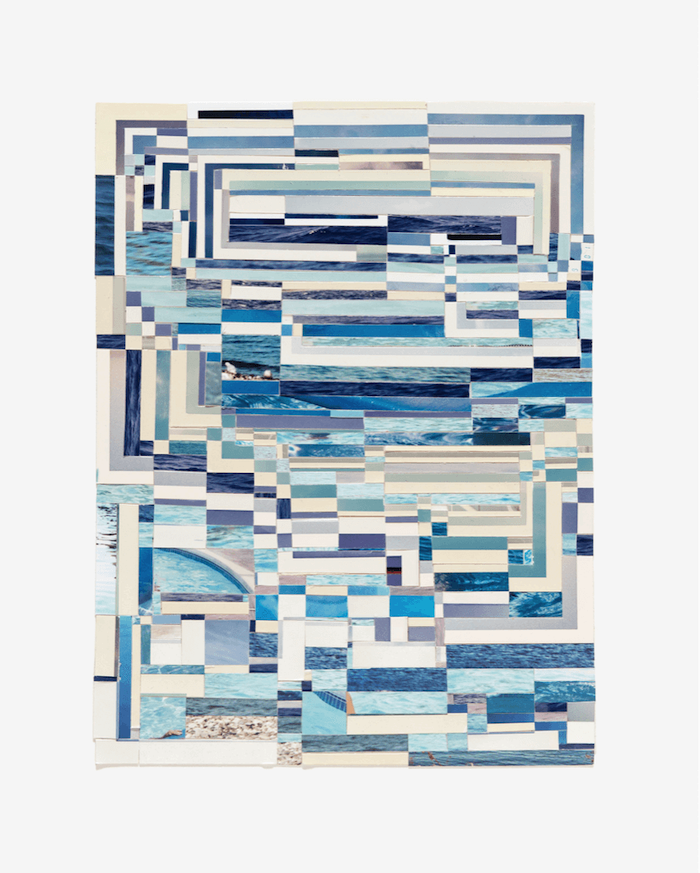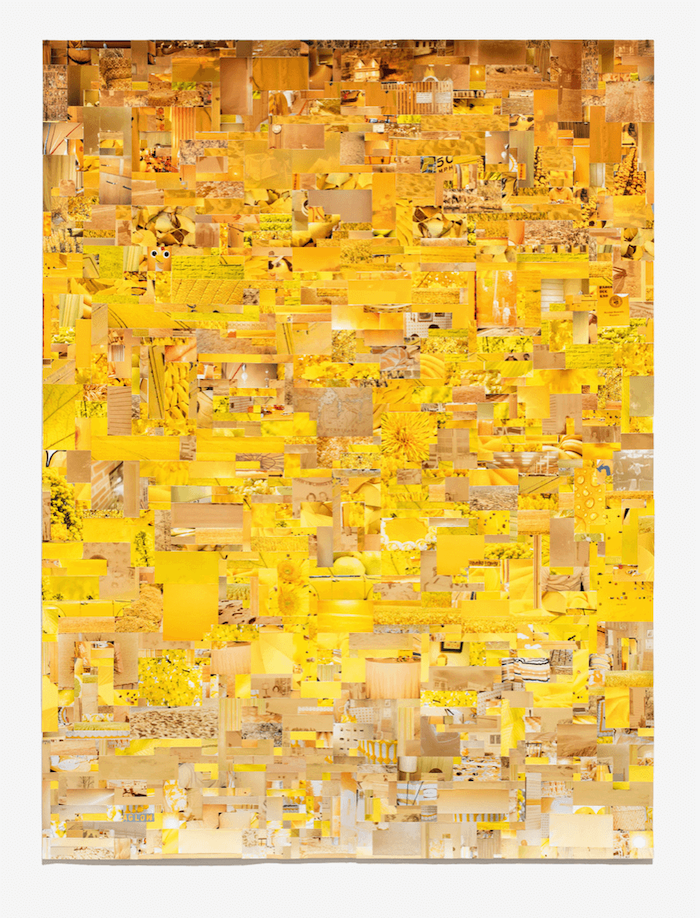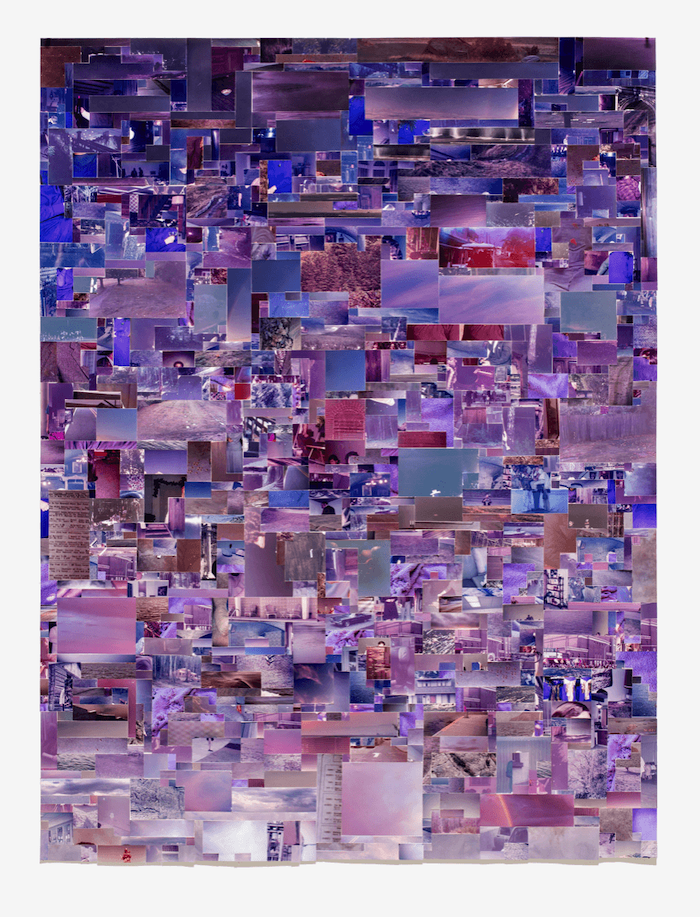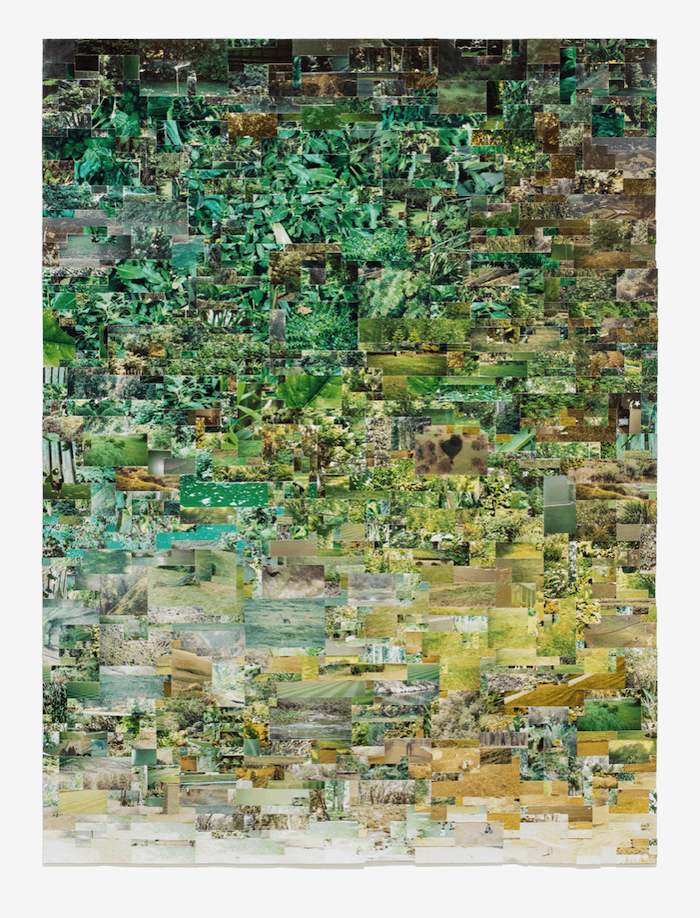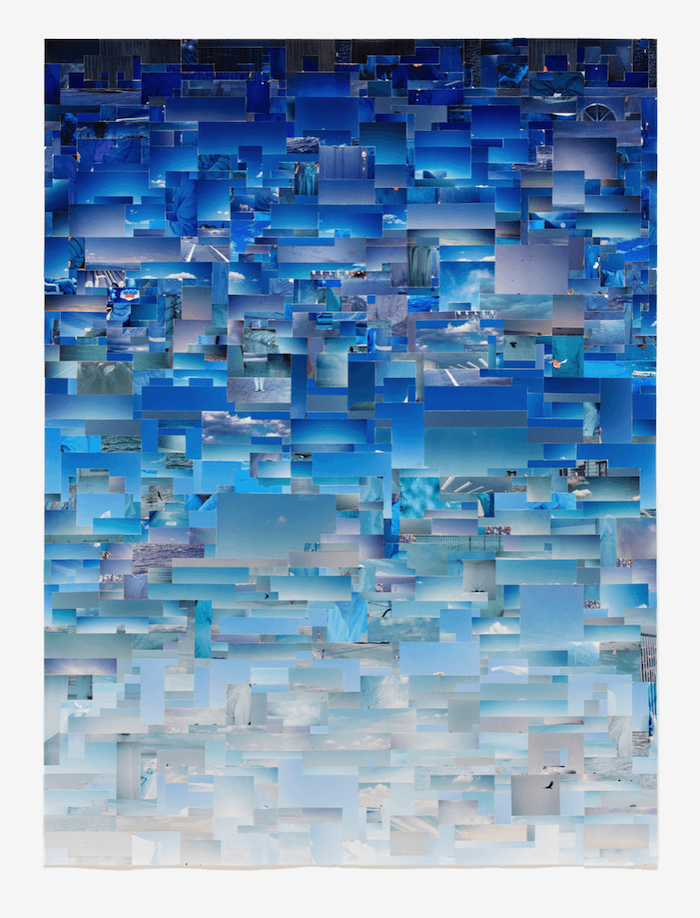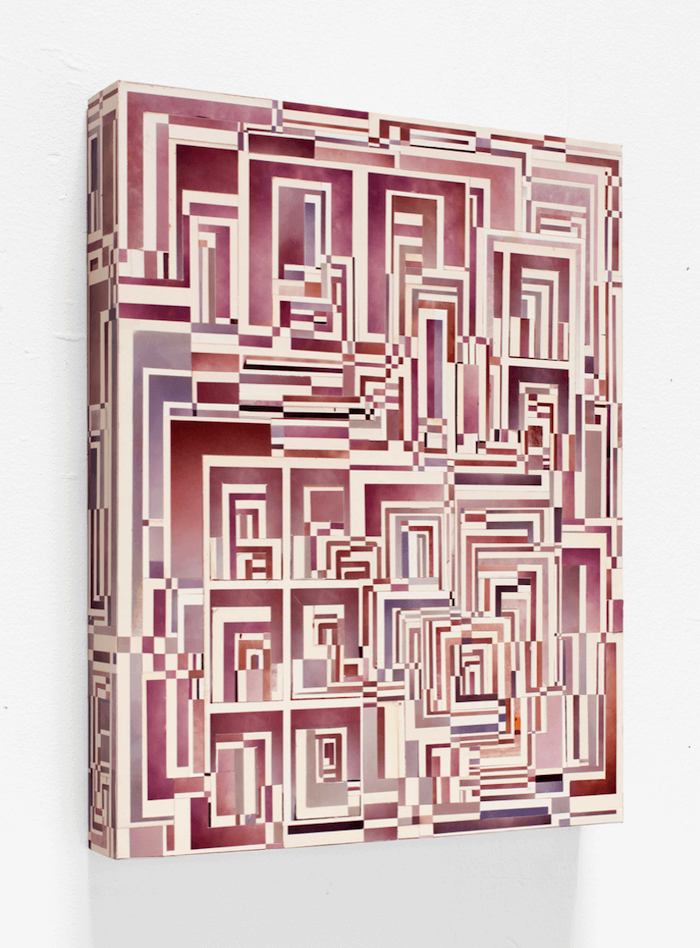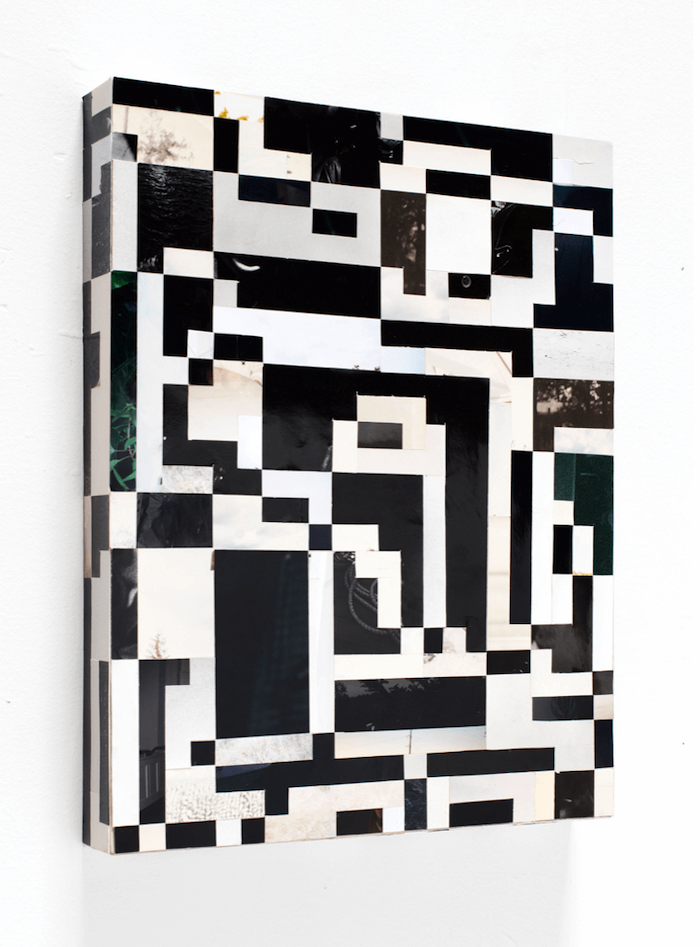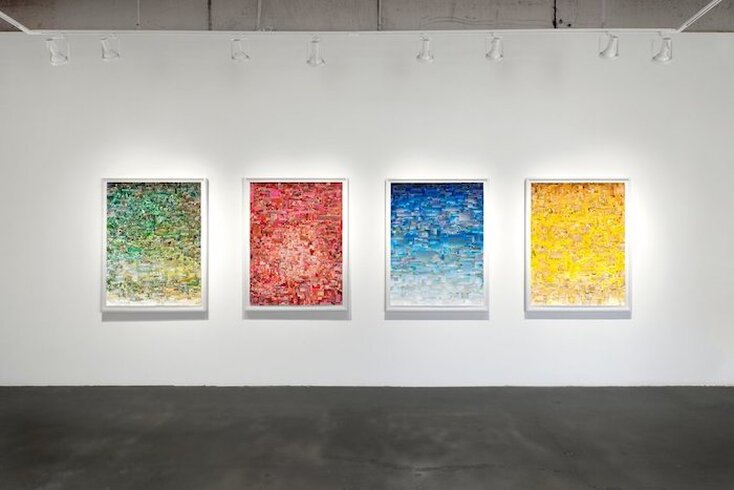Joe Rudko
Untitled Colors
Red Scrap, 2021. Found photographs on paper. 15 x 11.25 inches ©Joe Rudko
|
Joe Rudko’s solo exhibition, 'Untitled Colors' at Von Lintel Gallery in Los Angeles, brings together 10 large single-colour photographs. The exhibition comprises a large body of work formed by personal snapshots, family photos and anonymous internet finds, skilfully deconstructed and reshaped into large photo montages.
This Gold Circle showcase includes an interview with American artist Joe Rudko, who shares insights into the way he creates, what influences his artistic decisions, and the creative process behind his craft. |
Flower Scrap, 2021. Found photographs on paper. 15 x 11.25 inches ©Joe Rudko
Can you tell us a bit about yourself and how your career as an artist began?
I live in Seattle, where I’ve grown up and spent most of my life. I live in a quiet corner of Capitol Hill, and bike to my studio a couple miles away in SODO.
As a teenager, I painted from National Geographic, which inspired me to get my own camera and take my own pictures. I went on to study photography at Western Washington University, where I worked taking portraits, photographing city council meetings, concerts, and occasional weddings. I was also wandering around my neighborhood and doing some light trespassing to take photographs of interesting arrangements of garbage. I made drawing experiments with antique photographs that I bought from a local antique store. I enjoyed the tactility of the collage, and found comfort in the methodical repetition of drawing lines. These were the first of the Object Drawings, which I showed in 2013 in Seattle at an apartment gallery called Vignettes. People responded well to the work, and that show domino-ed into another, and another, and another. |
Blue Scrap, 2021. Found photographs on paper. 15 x 11.25 inches ©Joe Rudko
What are the primary influences in your work?
|
Yellow, 2021. Found photographs on paper. 50.5 x 38.12 inches ©Joe Rudko
Violet, 2021. Found photographs on paper. 50.25 x 38.25 inches ©Joe Rudko
Untitled Colors is based on 10 large single-colour photographic works. Can you describe the creative process for making the works?
|
Red, 2021. Found photographs on paper. 50.25 x 38.12 inches ©Joe Rudko
Green, 2021. Found photographs on paper. 50.25 x 38.25 inches ©Joe Rudko
The photographic material that you gather for the creation of these photomontages is of different origin. Are there other factors affecting what is selected, such as age or other properties?
For this series of work, it was important to use materials from as many different sources and time periods as possible. Some of the sources were given to me by family, some from friends who work with collage, some were purchased from antique stores or ebay, and some are my own photographs which I took as a teenager. I wanted a broad and inclusive array of materials.
|
Blue, 2021. Found photographs on paper. 50.25 x 38.12 inches ©Joe Rudko
What is the importance of colour in your work?
|
What was the most challenging aspect of creating these intricate photomontages?
|
How do you see this body of work evolving? Do you have plans to develop it further?
|
Untitled Colours by Joe Rudko - Exhibition view at Von Lintel Gallery, Los Angeles
All images ©Joe Rudko
With thanks to Von Lintel Gallery, Los Angeles
With thanks to Von Lintel Gallery, Los Angeles
Joe Rudko |
Von Lintel Gallery
|
|
Joe Rudko is a graduate of Western Washington University and has shown broadly in both solo and group exhibitions throughout the Northwest including exhibitions at the Portland Art Museum. He has been the recipient of the Future List Award and two Art Walk Awards from City Arts Magazine as well as the Vermont Studio Center Fellowship Award and the Facebook Artist in Residence program. His work is featured on the cover of indie rock band Death Cab for Cutie’s album Kintsugi and is included in the permanent collections of the Portland Art Museum, F5, Fidelity Investments, and the City of Seattle. His work has been published in Artforum, Art in America, New American Paintings, Humble Art Foundation, Fukt Magazine for Contemporary Drawing, The Stranger, and The Seattle Times. Rudko lives and works in Seattle, WA.
www.joerudko.com |
Founded by Tarrah von Lintel more than 20 years ago, Von Lintel Gallery has continually developed its discerning curatorial point of view. The gallery predominantly features painting, photography and unique works on paper that are forward thinking and challenging while maintaining a strong sense of aesthetic tradition. Focusing on a selective roster of artists who quietly push the boundaries of medium and materiality, the gallery exhibits art that will continue to engage the viewer over time.
Tarrah von Lintel began her career in Paris, working first with Galerie Claire Burrus and then Thaddeus Ropac before opening her own gallery in Munich in 1993. Her gallery featured many NY artists, some of whom she continues to represent today, leading to her move to NYC’s growing Chelsea district in 1999. After 15 successful years in NY, the gallery relocated to a much larger space in the burgeoning Culver City arts community, in recognition of LA’s growing importance on the international art scene. Von Lintel artists have shown or placed work in important public collections, among them The Metropolitan Museum of Art; Museum of Modern Art; The Whitney Museum of American Art; the International Center of Photography; Museum of Fine Arts, Boston; the Museum of Fine Arts, Houston; Los Angeles County Museum of Art; San Francisco Museum of Modern Art; the High Museum; The Getty; the Kemper Museum of Contemporary Art; and Londonʼs National Gallery of Art. www.vonlintel.com |
